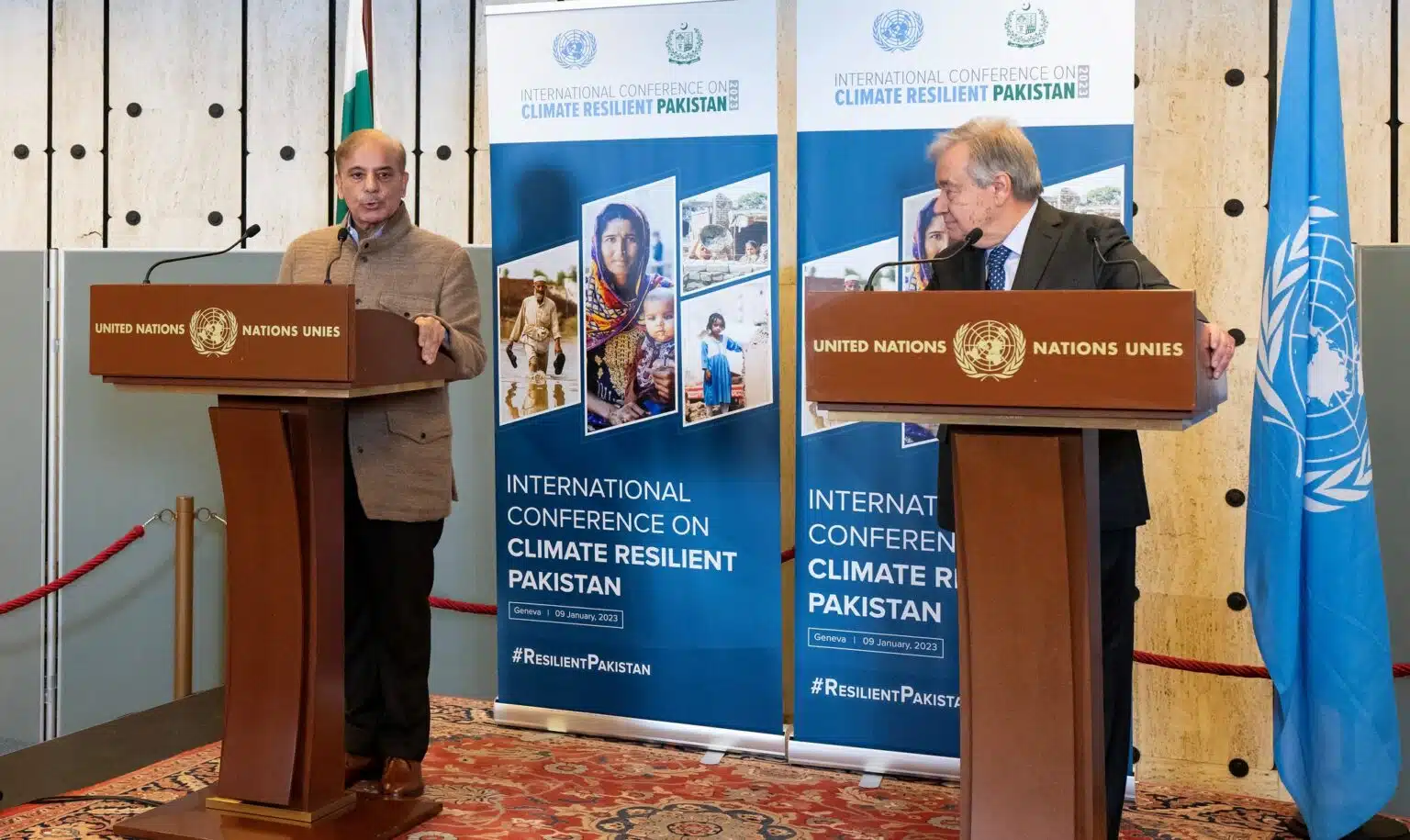Post facing one of the worst natural disasters of the last decade in South Asia, Pakistan is still struggling to bring its citizens to their feet. One-third of the nation was inundated, around 15,000 people were killed or wounded, and 8 million were uprooted.
More than 2 million dwellings, 13,000 kilometers of roads, 439 bridges, and over 4 million acres of farmland were wiped out or damaged. As a direct result of these disasters, an estimated 9 million additional individuals may be thrown into poverty.
While millions in Pakistan stand affected owing natural disasters, the international community has come together to provide aid.
Recently, countries have joined in on the collective recovery effort moved by the UN Secretary-General and the Prime Minister of Pakistan as discussed at the International Conference on Climate Resilient Pakistan.

International Conference on Climate Resilient Pakistan
A collective of $9bn has so far been pledged at this conference that took place on the 9th of January, 2024, hosted in Geneva. The effort is based on an objective termed ‘4RF’ (Resilient Recovery, Rehabilitation, and Reconstruction Framework) of the conference. The immense challenge of restoration and rehabilitation awaits in the future post-disaster.
Pakistan has prepared a Post-Disaster Needs Assessment (PDNA) with the assistance of the United Nations, the World Bank Group, the Asian Development Bank, and the European Union. The PDNA estimates flood damages in excess of US$14.9 billion, economic losses in excess of US$15.2 billion, and reconstruction needs in excess of US$16.3 billion.
According to the reports presented by Prime Minister Sharif, about half of the required $16.3bn will be provided by domestic resources.
Post the conference in Geneva, Pakistan Deputy Foreign Minister, Hina Rabbani Khar gladly announced that the current pledged amount exceeds the initial request set by Pakistan to cover recovery costs. She said that a couple of parties had also provided in-kind support.
Monday’s largest contribution, $4.2 billion, arrived first from the Islamic Development Bank Group. Martin Raiser, vice president of the World Bank for South Asia, announced a $2 billion investment.
Furthermore, the Asian Infrastructure Investment Bank, the Kingdom of Saudi Arabia, the European Union, Japan, and China were also donors in times of disaster impact.
Challenges
Time and again, concern has been expressed by the UN authorities over the effects of these catastrophic floods on the economic standing of Pakistan. Floods struck Pakistan at a time when it was already undergoing an economic crisis, and the country continues to experience financial difficulties, resulting in record-high inflation.
Albeit, PM Sharif stands confident that through transparent investments and the 4RF policy, Pakistan will be able to move forward with a sense of purpose and sense of achievement.
A bigger concern for some delegates was the assurance that these funds reach the concerned areas. However, Pakistan has promised to run independent monitoring throughout the process and maximize the benefits.
The chief of the United Nations Development Program, Achim Steiner, who helped arrange the meeting, stated that Pakistan’s government is aware that donors would be looking for results such as accountability, clarity, efficiency, openness, and efficacy in the supported initiatives.
Furthermore, the current global order faces an era of the repercussions of climate change and the actions taken by the international community as well as the Pakistan government need to be resilient and sustainable in nature for long-term results.













